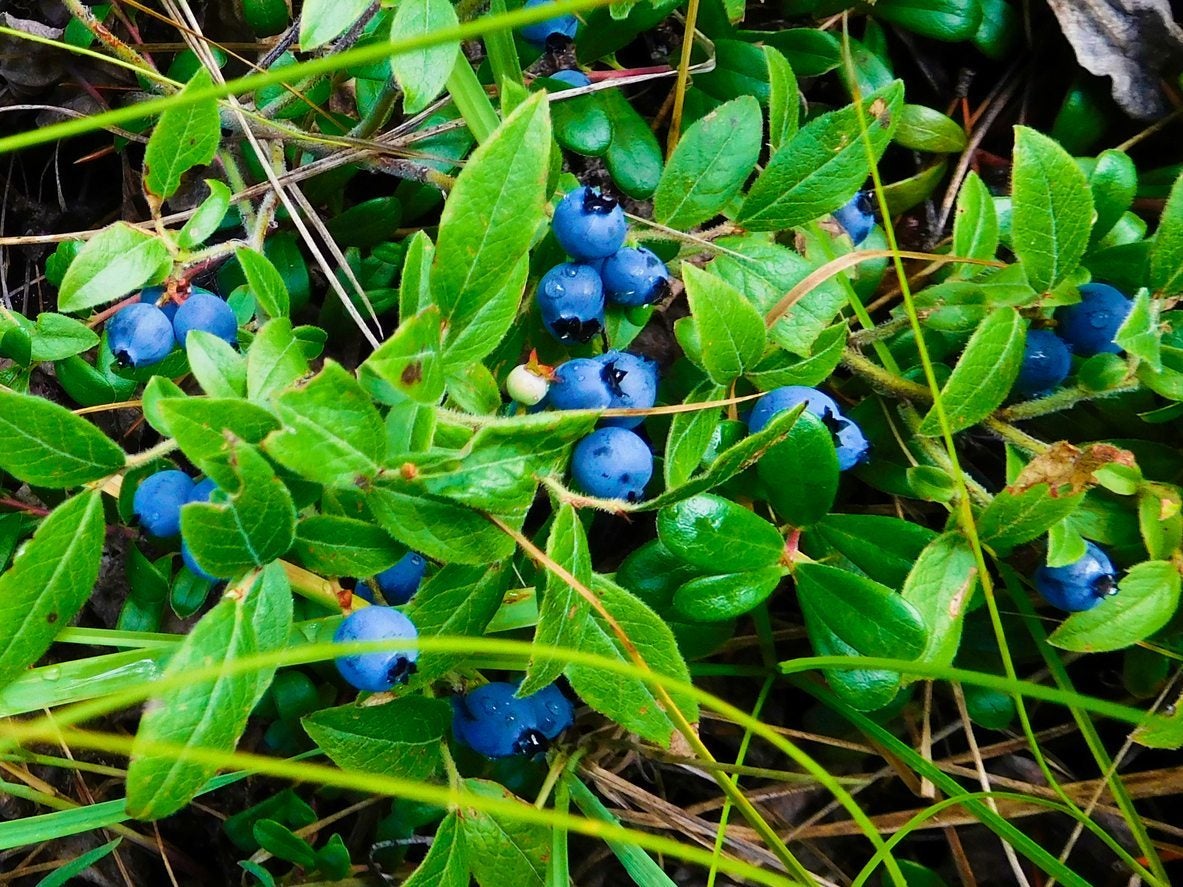Highbush Vs. Lowbush Blueberry Bushes – What Are Highbush And Lowbush Blueberries


If the only blueberries you see are in baskets in the supermarket, you may not know the different types of blueberries. If you decide to grow blueberries, the differences between lowbush and highbush blueberry varieties becomes important. What are the different types of blueberries? What are highbush and lowbush blueberries? Read on for information on highbush vs. lowbush blueberry crops.
Different Types of Blueberry Bushes
Blueberries are a great choice for gardeners since they are both a delicious fruit crop and an attractive landscape shrub. The berries are easy to grow and easy to pick. Blueberries can be eaten right off the bush or used in cooking. Their high antioxidant content makes them a very healthful treat. You’ll have to select the particular varieties best suited to your garden, goals, and climate. Two types are commonly available in commerce, highbush and the lowbush blueberry.
Highbush vs. Lowbush Blueberry
What are highbush and lowbush blueberries? They are different types of blueberry bushes, each with their own varieties and characteristics. You’ll find lowbush or highbush blueberry varieties that might work for you.
Highbush blueberries
Let’s look first at the highbush blueberry variety. It will come as no surprise that highbush blueberries (Vaccinium corymbosum) are tall. Some cultivars will grow so tall that you have to look up at them. When you are comparing lowbush and highbush varieties, remember that highbush berries are bigger than lowbush. They also grow more abundantly. Highbush blueberries are deciduous, perennial shrubs. They have showy red leaves in the spring that mature into blue-green. The leaves blaze in fiery shades in the autumn. The blossoms are white or pink, appearing in clusters at the stem tips. These are followed by the blueberries. You’ll find two varieties of highbush plants in commerce, the northern and the southern highbush forms. The northern type grows in areas with cold winters like those in USDA plant hardiness zones 4 through 7. Southern highbush blueberries don’t like such cold weather. They thrive in a Mediterranean climate and can grow in warmer climates up to USDA hardiness zone 10. Southern bushes do not require winter chilling.
Lowbush Blueberries
The lowbush blueberry (Vaccinium angustifolium) is also called the wild blueberry. It is native to the colder regions of the country, like New England. They are hardy shrubs, thriving in USDA growing zones 3 through 7. Lowbush blueberries grow to knee-height or shorter. They sprawl as they mature. The berries are small and very sweet. Don’t try growing them in warmer climates since the fruits require winter chilling.
Lowbush and Highbush Blueberry Varieties
The best lowbush and highbush blueberry varieties that are often grown most frequently in gardens include:
- Northern highbush cultivars– Blueray, Jersey, and Patriot
- Southern highbush cultivars– Cape Fear, Gulf Coast, O'Neal, and Blue Ridge
- Lowbush varieties- Chippewa, Northblue, and Polaris
Gardening tips, videos, info and more delivered right to your inbox!
Sign up for the Gardening Know How newsletter today and receive a free copy of our e-book "How to Grow Delicious Tomatoes".

Teo Spengler is a master gardener and a docent at the San Francisco Botanical Garden, where she hosts public tours. She has studied horticulture and written about nature, trees, plants, and gardening for more than two decades. Her extended family includes some 30 houseplants and hundreds of outdoor plants, including 250 trees, which are her main passion. Spengler currently splits her life between San Francisco and the French Basque Country, though she was raised in Alaska, giving her experience of gardening in a range of climates.
-
 Looking For Plants To Give You The Soft And Fuzzies? Try These 5 Fuzzy Leaf Plant Options
Looking For Plants To Give You The Soft And Fuzzies? Try These 5 Fuzzy Leaf Plant OptionsLovers of texture, drama, silver foliage and tactile plants will adore these special sensory garden additions. These fuzzy leaf plant options will leave you all aglow
By Susan Albert
-
 Get Ready For A Summer Of Hummers! Grow These Full Sun Hummingbird Plants and Flowers
Get Ready For A Summer Of Hummers! Grow These Full Sun Hummingbird Plants and FlowersIf you’re lucky enough to enjoy a sunny backyard, make sure you are maxing out on your pollinator opportunities and grow these full sun hummingbird plants and flowers
By Tonya Barnett